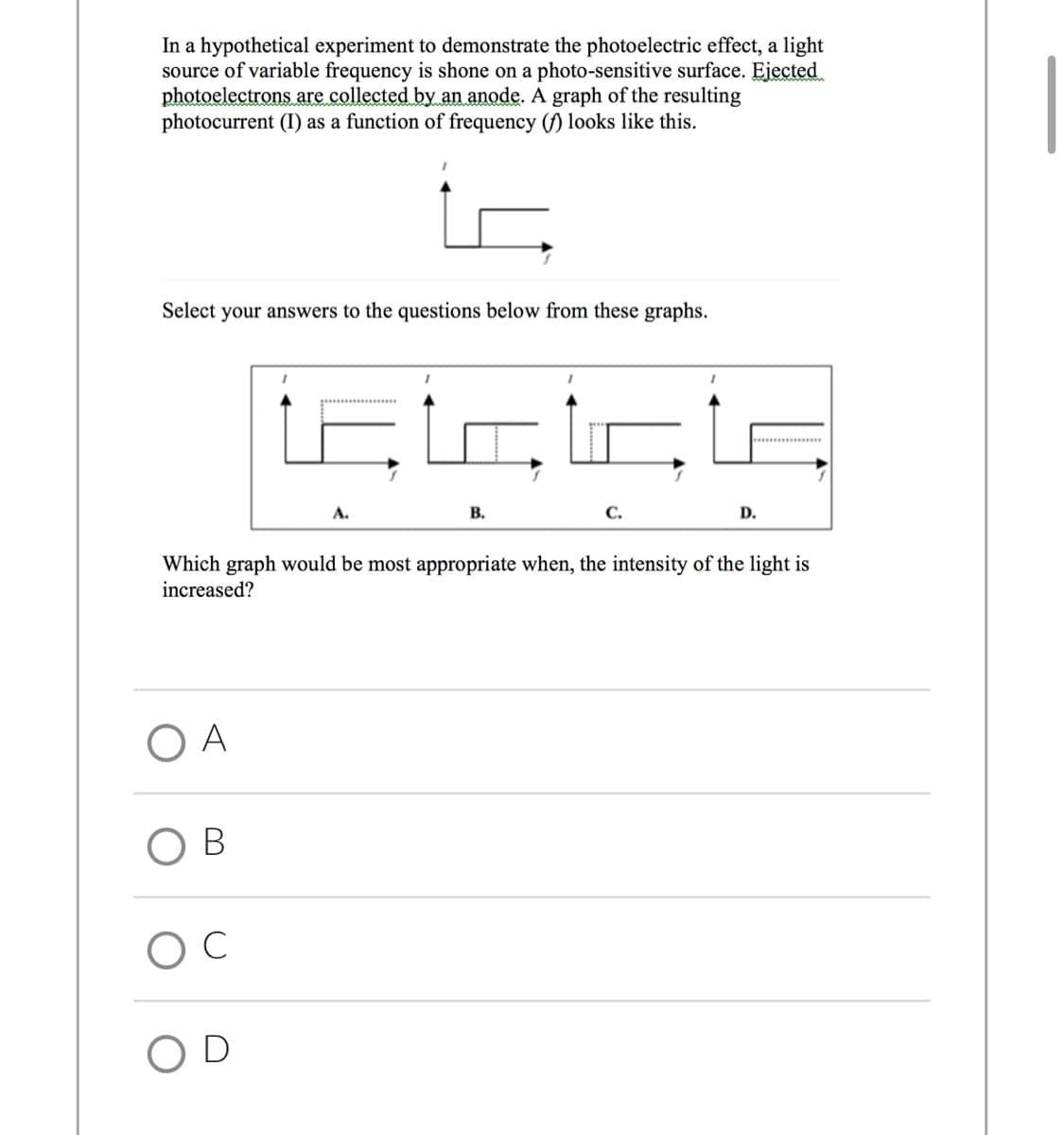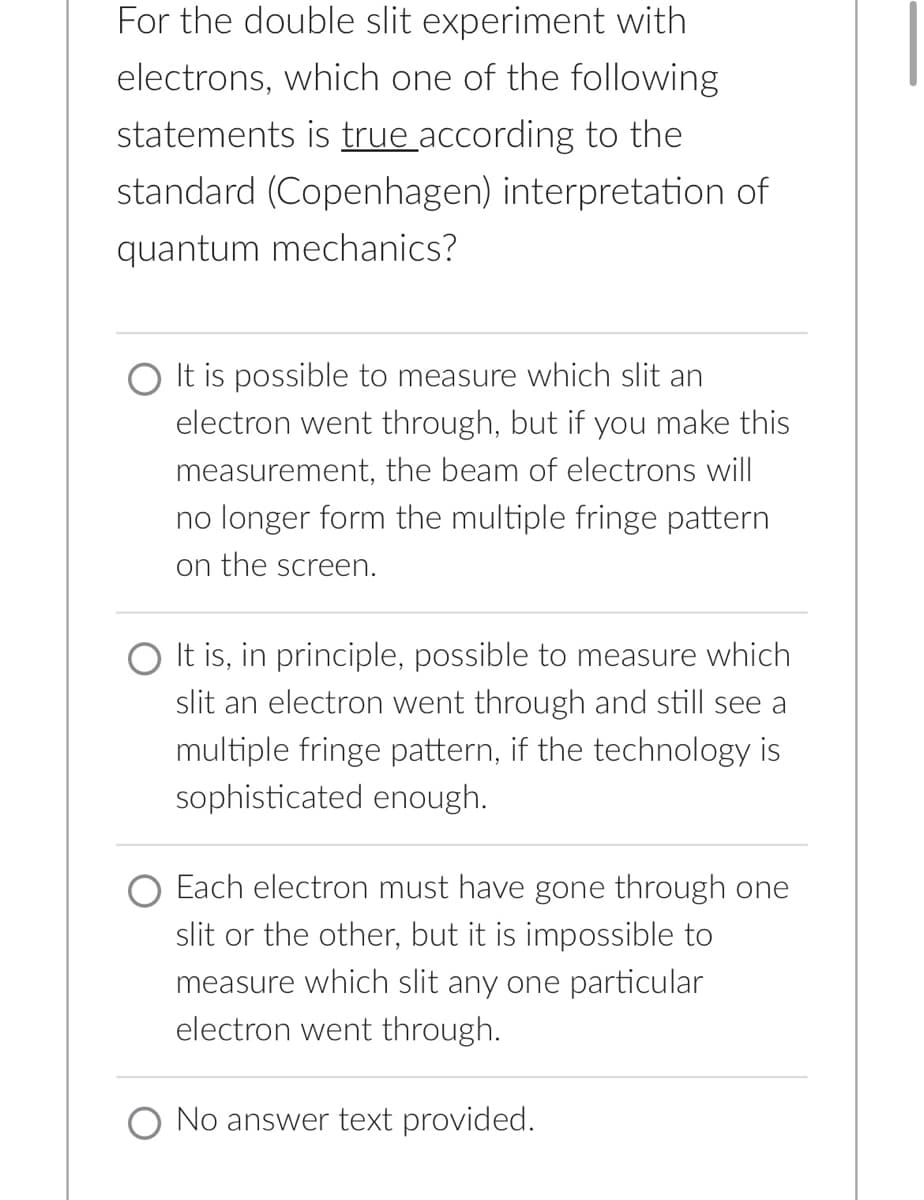In a hypothetical experiment to demonstrate the photoelectric effect, a light source of variable frequency is shone on a photo-sensitive surface. Ejected photoelectrons are collected by an anode. A graph of the resulting photocurrent (I) as a function of frequency (f) looks like this. Select your answers to the questions below from these graphs. O A OB Which graph would be most appropriate when, the intensity of the light is increased? O C A. OD B. D.
In a hypothetical experiment to demonstrate the photoelectric effect, a light source of variable frequency is shone on a photo-sensitive surface. Ejected photoelectrons are collected by an anode. A graph of the resulting photocurrent (I) as a function of frequency (f) looks like this. Select your answers to the questions below from these graphs. O A OB Which graph would be most appropriate when, the intensity of the light is increased? O C A. OD B. D.
Related questions
Question
100%

Transcribed Image Text:In a hypothetical experiment to demonstrate the photoelectric effect, a light
source of variable frequency is shone on a photo-sensitive surface. Ejected
photoelectrons are collected by an anode. A graph of the resulting
photocurrent (I) as a function of frequency (f) looks like this.
Select your answers to the questions below from these graphs.
O A
B
O C
A.
OD
L
Which graph would be most appropriate when, the intensity of the light is
increased?
B.
C.
D.

Transcribed Image Text:For the double slit experiment with
electrons, which one of the following
statements is true according to the
standard (Copenhagen) interpretation of
quantum mechanics?
It is possible to measure which slit an
electron went through, but if you make this
measurement, the beam of electrons will
no longer form the multiple fringe pattern
on the screen.
It is, in principle, possible to measure which
slit an electron went through and still see a
multiple fringe pattern, if the technology is
sophisticated enough.
Each electron must have gone through one
slit or the other, but it is impossible to
measure which slit any one particular
electron went through.
No answer text provided.
Expert Solution
This question has been solved!
Explore an expertly crafted, step-by-step solution for a thorough understanding of key concepts.
This is a popular solution!
Trending now
This is a popular solution!
Step by step
Solved in 3 steps
